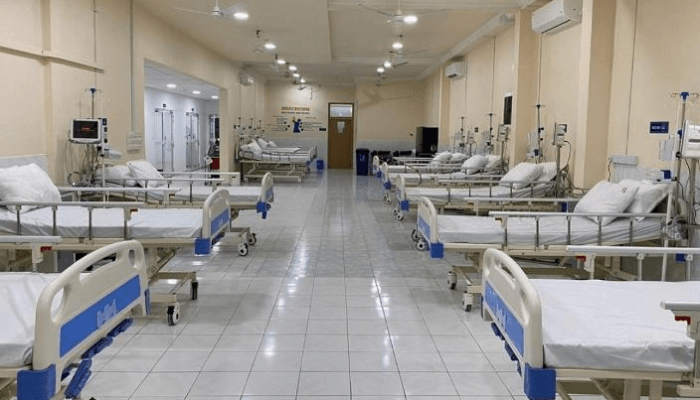At the University College Hospital (UCH), Ibadan, a 109-day blackout left operating theatres unusable and diagnostic labs idle. In one incident, a family of four injured in a gas explosion needed ventilators that didn’t work; ICU staff had to manually pump resuscitators. Two of them died. A cancer patient in another ward also passed away while waiting for daylight to safely undergo a procedure that couldn’t proceed under torchlight.
At Jummai Babangida Aliyu General Hospital, Minna, a patient undergoing surgery died mid-operation when the hospital’s generator failed 35 minutes in, and there was no fuel backup. In Katsina, civil society groups reported daily deaths across public hospitals during an eight-day national grid collapse, exposing how power failures cost more than convenience; they cost lives.
Read also: Healthcare Federation of Nigeria partners HBA to transform healthcare sector
These are not isolated tragedies. In Nigeria’s private health facilities, a quieter crisis unfolds daily. While wealthier patients travel abroad, often citing unreliable infrastructure, local hospitals bleed millions of naira monthly just to stay powered. Every litre of diesel burnt for electricity is money diverted from life-saving medicines, staff training, and vital upgrades; every blackout means delayed care, cancelled procedures, or worse, deaths that should never happen.
Nigeria’s private health sector has invested billions into reversing the country’s long-standing dependence on medical tourism. This effort aligns with President Tinubu’s vision to position Nigeria as Africa’s premier destination for medical care. However, this goal is threatened by one overlooked yet fundamental challenge: the high cost and unreliability of power supply.
“Every litre of diesel burnt for electricity is money diverted from life-saving medicines, staff training, and vital upgrades; every blackout means delayed care, cancelled procedures, or worse, deaths that should never happen.”
The cost burden of unreliable power
From specialist hospitals to diagnostic labs, Nigeria’s private health facilities operate in a paradox. Citizens rightly demand world-class reliability for surgeries, oxygen therapy, refrigeration, and electronic records but settle for a power system that can’t support it. Every power failure endangers a newborn in an incubator and risks the integrity of a vaccine cold chain or the accuracy of a diagnostic result.
The costs are staggering. According to an April 2025 survey by the Healthcare Federation of Nigeria (HFN), which represents a network of private health providers, high energy demand and costs are placing private healthcare facilities under financial strain, reducing their ability to maintain high-quality care. Over 30 percent of the 36 respondents reported spending between ₦5 million and at least ₦20 million monthly on electricity from both the national grid and backup generator systems, without factoring in generator maintenance, equipment breakdowns, and service downtimes. These are funds that could otherwise enhance patient care, expand access, or improve workforce conditions.
Recent electricity tariff hikes by the Nigerian Electricity Regulatory Commission (NERC) have intensified the burden. In April 2024, Band A consumer rates rose by more than 200 percent. While some public hospitals receive subsidies that shield them from full exposure, private facilities bear the entire cost. To stay operational, they must either raise patient fees, pushing care out of reach for many, or cut costs elsewhere, often to the detriment of quality. The HFN survey further highlighted that 45.7 percent of respondents’ energy costs have negatively affected the quality of service delivery, while 42.9 percent noted an influence on the cost of pharmaceutical products, meaning that these new tariffs are unsustainable, further squeezing an already overstretched sector.
Read also: FG opens negotiations with health unions to avert looming strikes
The cause
The roots of Nigeria’s power failures are systemic:
● Tariffs set below actual costs have created a financially unsustainable energy sector.
● Gas shortages routinely cripple power generation.
● Transmission infrastructure is outdated and prone to collapse.
● Distribution companies (DisCos) operate on thin margins, limiting reinvestment.
● A centralised grid model is ill-suited for Nigeria’s vast and dispersed population.
● Investor uncertainty and lack of maintenance exacerbate the fragility.
The missed opportunity
Nigeria loses over $1 billion annually to outbound medical tourism. While quality of care is often cited, a key driver is infrastructure reliability, especially power. Even well-funded facilities struggle to attract high-value patients or international partnerships if their operating theatres and ICU suites are vulnerable to outages, leaving them stuck in a constant state of crisis management.
Moreover, transitioning from diesel-heavy power models to solar–battery hybrids is not just a financial decision but a public health imperative. Diesel exhaust contributes to respiratory diseases, including asthma and chronic obstructive pulmonary disease, particularly in urban centres where hospitals are often located. Cleaner energy adoption in healthcare facilities would reduce emissions, improving both immediate patient outcomes and long-term population health.
By addressing the electricity gap with clean energy, Nigerian hospitals can recapture a share of the outbound market more sustainably. This would not only strengthen institutional viability and public trust but also keep critical healthcare spending within the national economy, fuelling further upgrades and expansion.
Case study: Delta State solar-enabled healthcare facilities demonstrate PPP in action
Delta State provides a promising model. Through a Public–Private Partnership (PPP), 15 primary healthcare centres across 12 local governments were handed to private providers and empanelled by the state health insurance scheme. This resulted in a sharp rise in enrolment, reaching 1.2 million people.
Simultaneously, the government invested in solar installations across 15 public hospitals, reducing diesel dependence and stabilising power for critical services. With additional support from the Shell Foundation and All On, this hybrid energy approach demonstrated how government, private, and philanthropic actors can co-invest in scalable, reliable health infrastructure.
Read also: PenCom proposes health insurance, higher retirement pensions for police
Toward resilient health power systems
Despite the benefits, many health facilities hesitate to switch due to the high upfront costs of solar–battery hybrid systems. Yet innovative financing models already thriving in other sectors can be adapted. What’s needed is a shift from crisis response to systemic transformation.
Key pathways include:
● Tiered hybrid systems: Segregate critical and non-critical loads, powering ICUs and operating rooms with solar PV and battery storage, with efficient generator backup.
● Rooftop solar + battery + diesel: Reduces generator use by up to 70 percent.
● Gas-powered backup: A cleaner alternative for nighttime loads.
● Energy-as-a-Service (EaaS): Facilities lease systems, avoiding capital expenditure and gaining performance guarantees.
● Mini-grid partnerships: Shared energy infrastructure across medical clusters.
● Dedicated UPS for critical devices: Ensures uninterrupted power for high-risk equipment.
To unlock these solutions, a Health Energy Transition Fund can be established, drawing from green bonds, impact investors, and multilateral development banks. Structured repayment via diesel savings and equipment efficiency gains can ensure sustainability.
Read also: FG plans path to self-reliance in health financing amid aid cuts
A defining moment for health and energy leaders
Reliable electricity is not a luxury; it is a clinical necessity and a prerequisite for sustainable healthcare delivery. It determines whether a child survives neonatal complications, whether a mother can deliver safely, or whether life-saving interventions proceed without compromise. As the Ministries of Power and Health prepare for the upcoming Power Dialogue in September, this moment offers a critical window to act. Extending national energy reforms to include private facilities, catalysing access to green financing, and integrating private providers into clean energy programmes are not only fair, but they are also strategic. As the HFN survey shows, private health facilities are ready to lead Nigeria’s health energy transition. All they need is a seat at the table and policies that match their resolve with opportunity.









